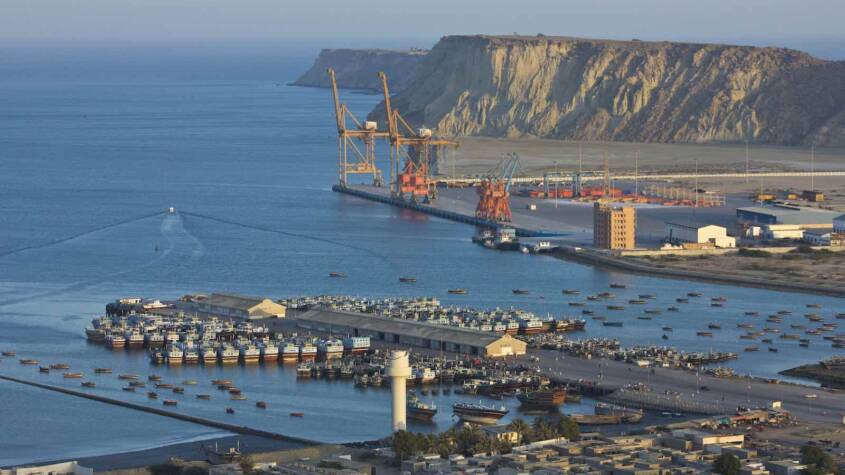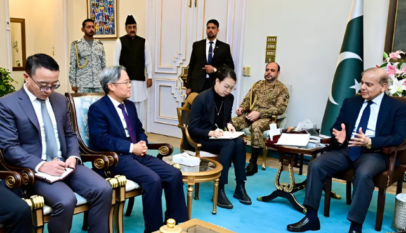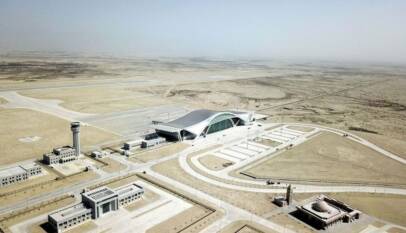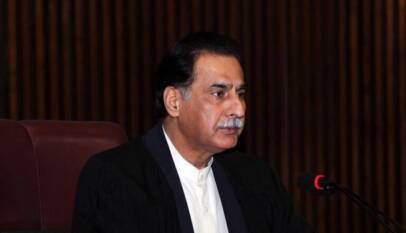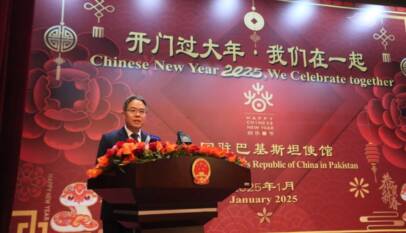West to synergize CPEC through EWEC, not contest it, says Raashid Wali
Raashid Wali Janjua, a political analyst writes on the need for socio-economic cooperation between the East and West. He writes that just as China is building BRI and CPEC, the West can build similar corridor or combine the two to create the East West Economic Corridor (EWEC). He urges that this is integral because BRI promises to raise trade volume with some 40 countries to USD 2.5 trillion after investing USD 1 trillion in government spending, and so this should be embraced and not contested. He writes that EWEC can serve as an economic corridor linking India-Pakistan-Afghanistan and Central Asia into an economic union. The EWEC can act as an ideal complement to CPEC, binding two corridors into an economic union making use of common SEZs and ports like Gwadar. He concludes by saying that EWEC is an idea whose time has come, and that global powers and regional countries need to recognize the impact of an EWEC-driven economic union binding South Asia with Afghanistan and Central Asia in a sustainable peace and economic union.
The East and West apparently can for once meet in a symbiosis of values and material rewards. The idea is embodied in the East West Economic Corridor (EWEC), an eponymous complement to CPEC, a small component of China’s Belt and Road Initiative (BRI).
The BRI promises to raise the trade volume with some 40 countries to $2.5 trillion after investing $1 trillion in government spending. It is an idea worth embracing and not contesting.
One hopes that the above is not lost on the US. Michael Buckley’s book, ‘Unrivalled’, mentions the US has three times China’s wealth and five times its military capabilities. Yale historian Paul Kennedy’s analysis of global powers in the last 500 years points out that the US has attained a disparity with other nations hitherto unseen in history. What then stops it from shunning competitiveness and embracing cooperation with the only global power that comes remotely close as a putative competitor?
The weaknesses of the US are rooted in the internal decay of institutions, political polarization, economic inequality and increased spending on global competitiveness that benefits specific lobbies in the country. Any sane mind would ask why the US then seeks a competitive mode with global competitors instead of cooperative engagement? The answer might come from the US’s political and academic circles when the cost-benefit calculations of the nature and scope of the global competition are laid bare through honest analysis. Global cooperative linkages could yield security and economic benefits for the US as well as its allies. One such strand is the EWEC. It is envisaged as an economic corridor linking India-Pakistan-Afghanistan and Central Asia into an economic union.
A similar idea with the name of the New Silk Route Initiative (NSRI) was mooted by Washington based scholar S Frederick Starr in 2011. Hillary Clinton the then US secretary of state had announced the concept in 2011 comprising energy and infrastructural connectivity projects like the Turkmenistan-Afghanistan-Pakistan-India (TAPI) gas pipeline, Central Asia-South Asia Power Project (CASA 1000) linking Kyrgyzstan-Tajikistan-Pakistan through an electricity transmission grid and a network of road and railway lines. The concept was premised on linking Central Asian and South Asian states in a trade and commerce network in order to allow landlocked Afghanistan and Central Asian states to export their surplus fossil fuel and hydel based energy along with agricultural products.
The long hiatus in the above projects due to a decade long Afghan conflict put paid to the NSRI. After the Biden Administration’s pull-out announcement, the need for a sustainable peace in Afghanistan assumes greater salience. The region needs to be bound in an economic union in a manner that all connected countries develop stakes in a sustainable peace in Afghanistan. One way of building those stakes is to develop the EWEC linking India, Pakistan, Afghanistan and Central Asia states through an energy and infrastructure corridor. Projects like TAPI, CASA 1000, and road/rail linkages till the Central Asian States constitute the hardware of the corridor. The software however is the favourable trade regime, elimination of tariff and non-tariff barriers and development of specially incentivized economic zones to promote mutual trade and industrial activity.
The US can benefit through this corridor by developing infrastructure projects through public-private partnership, thereby enhancing its regional clout. Its clout with international lending and financial institutions can help the multinational and regional entities interested in participating in the infrastructure development projects. The US economic patronage of the EWEC would help it in retaining relevance in a strategically important region which if left alone would completely marginalize it vis a vis those competitors. India and the US have developed a strategic relationship based on multi-sectoral cooperation. Agreements like the Logistics Exchange Memorandum of Agreement (LEMOA), Communications Compatibility and Security Agreement (COMCASA), and Basic Exchange and Cooperation Agreement (BECA) indicate the depth and expanse of the emerging strategic cooperation between the two countries.
It would be a great loss to the region if the Indo-US strategic relationship exacerbates regional conflict and block politics in the region. Instead of using India as a regional surrogate to counter the rise of China, the US needs to take an expansive view of the Chinese interaction with the region. A cooperative engagement with the region would reduce the costs of the competitive scrimmage that the two leading global powers find themselves in. With five percent of the intraregional trade compared to external trade, South Asia is one of the least integrated regions of the world compared to South East Asia’s 35 percent and Europe’s 60 percent. The cost of doing trade in South Asia is much higher compared to extra regional trade. According to a World Bank report ,with better infrastructure and border crossing facilities the Indo-Pak trade alone can reach $20 billion.
The EWEC can act as an ideal complement to CPEC, binding two corridors into an economic union making use of common SEZs and ports like Gwadar. According to research findings by Agarwal and Sangeeta, who applied the gravity model to construct a trade potential index of Central and South Asia, the trade volume between two can easily increase by six times if the infrastructural and border control bottlenecks are removed. The surfeit of energy and untapped mineral resources of Central Asia and Afghanistan are crying out aloud to be integrated into a mutually beneficial economic union with Pakistan as a connectivity hub.
The EWEC is an idea whose time has come. Global powers and regional countries need to recognize the impact of an EWEC-driven economic union binding South Asia with Afghanistan and Central Asia in a sustainable peace and economic union.
Chinese Ambassador highlights significance of Third Plenary Session for China-Pakistan cooperation
The Third Plenary Session of the 20th Central Committee of the Communist Party of China ha…



